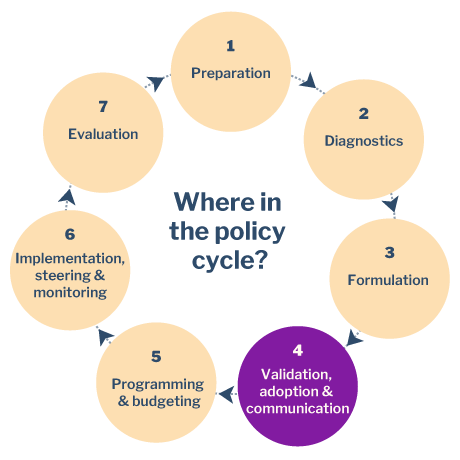The Context
The Readers’ Theater is a tool to show people how their own behaviours (and those of others) impact their fellows. In one company, it was used to show how employees experienced exclusion and inclusion at work. A moderator introduced the process (“Stories will be read. These are true, but the identifying details have been changed. Please listen in silence and note your own thoughts as you listen. A discussion will be held at the end.”) Appointed readers stepped forward to read the stories, one by one. Afterwards, the moderator facilitated a discussion on the effect of hearing them, empathizing with the employees, and gaining a better understanding of how the discussed behaviours impacted the organization overall.
Where in the policy cycle can this approach be used?

Potential for change
Informing people that their behaviour can make others feel excluded and devalued is unlikely to change their behaviour. Instead, personal, real-life stories are much more effective, because they target our feelings and not our rational thinking. In the company mentioned, this exercise raised awareness and compassion in employees, and afterwards many mentioned they now do checks on their own behaviours that could further promote inclusion.
Sources
Nielsen, T.C. and Kepinski, L. (2015). Complimentary overview: Inclusion Nudges Guidebook: Practical Techniques for changing Behaviour, Culture & Systems to mitigate unconscious Bias and create inclusive Organisations ![]() , January 2016.
, January 2016.
